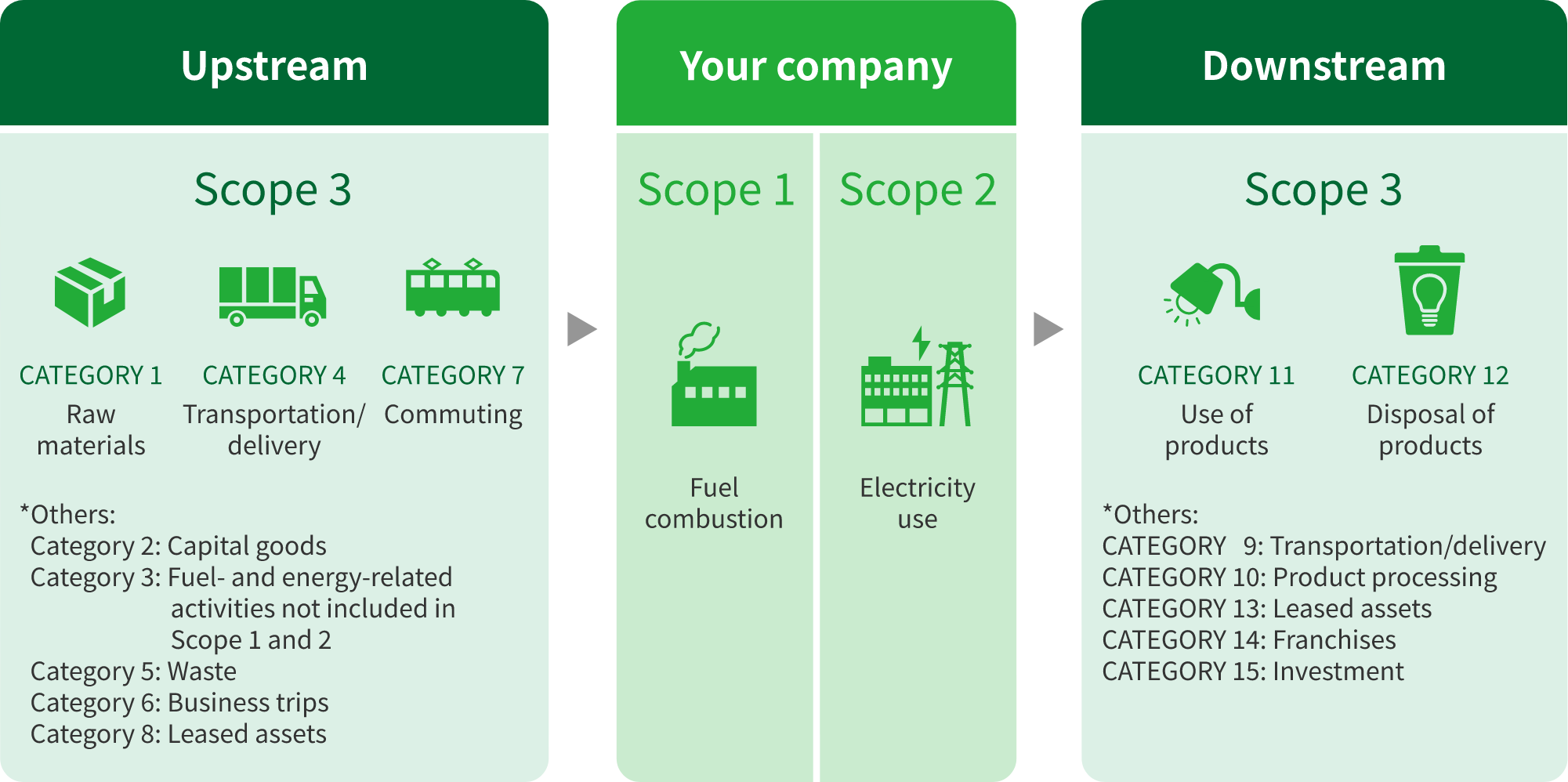
Carbon neutrality means balancing greenhouse gas emissions and absorption. The Paris Agreement was adopted in 2015 to solve the global issue of climate change, and the following long-term targets were agreed upon as common global targets:
- Limit global average temperature rise to within 2°C of pre-industrial levels. “2°C target” *
- Balance global man-made emissions and absorptions of greenhouse gases in the second half of this century.
* Since then, as the sense of crisis over climate change has grown, there is now an international consensus to set a target of less than 1.5°C as a goal to be strived for.
The world is making efforts to achieve these targets, and more than 120 countries and regions have set the target of “achieving carbon neutrality by 2050”.
In order to achieve this target, many companies are promoting decarbonization management by setting their own long-term visions for 2050 and mid-term greenhouse gas emission reduction targets for 2030. Such efforts will clarify their corporate value as an environmentally friendly company, which is expected to enhance their social credibility to investors and other stakeholders globally and expand their business opportunities.
What is supply chain emissions?
Companies working to decarbonize should first understand their own supply chain emissions.
Supply chain emissions are the sum of all emissions related to business activities, not just the emissions of the business operator itself. In other words, it refers to the greenhouse gases generated from the entire series of activities, including raw material procurement, manufacturing, distribution, sales, and disposal.
Supply chain emissions =
Scope 1 emissions + Scope 2 emissions
+ Scope 3 emissions
- Scope 1 emissions: Emissions from operations that are owned or controlled.
- Scope 2 emissions: Indirect emissions from the generation of purchased or acquired electricity,steam, heat or cooling consumed.
- Scope 3 emissions: All indirect emissions (not included in scope 2) that occur in the value chain, including both upstream and downstream emissions.

* Source: Green Value Chain Platform / Ministry of the Environment and Ministry of Economy, Trade and Industry / Japan
Reducing customer supply chain emissions
Many companies are beginning to work on the visualization of company-wide emissions in order to achieve carbon neutrality.
This visualization is necessary to streamline your company's decarbonization efforts, as the categories of high emissions vary from company to company.
As an example, the results of a survey on the supply chain emissions of electronics manufacturer A are shown. In the case of this manufacturer, the following three categories of emissions could be potential items of activities for reduction.
- Scope3 Category 1: Purchased products/services
- Scope3 Category 4: Transportation/delivery (upstream)
- Scope3 Category 11: Use of sold products





* Background materials: Green Value Chain Platform / Ministry of the Environment and Ministry of Economy, Trade and Industry / Japan